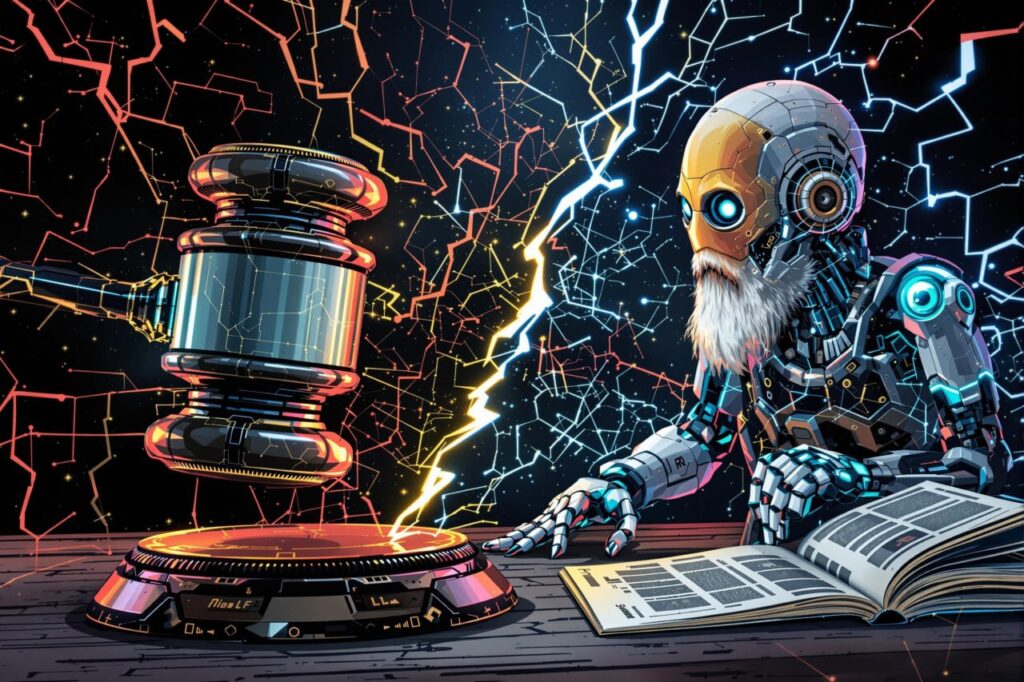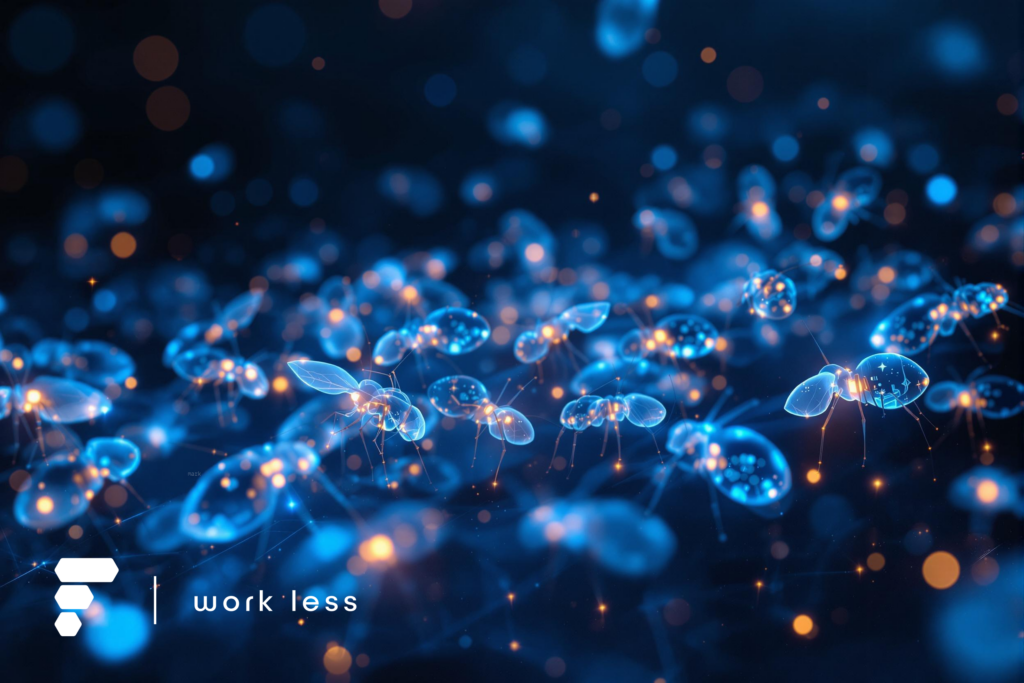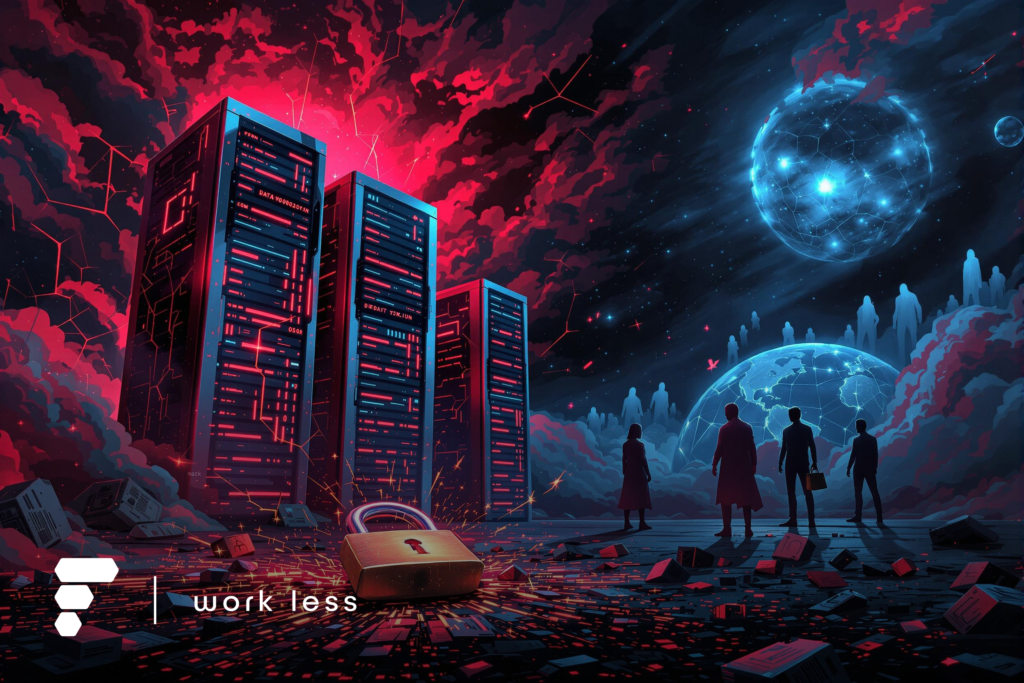The explosive growth of artificial intelligence has ushered in remarkable capabilities—from hyper-personalized chatbots to algorithms that predict diseases with startling accuracy. Yet beneath these achievements lies a pressing concern: Are today’s AI models built on a bedrock of unlawfully sourced copyrighted content? In our previous post, Copyright Illegality Threat for GenAI: A Looming Challenge for the AI Industry, we looked at how major AI developers like OpenAI could be using copyrighted data scraped from websites, books, and articles without proper authorization. This raises hard-hitting questions: Who really owns the data fueling these AI models? And what happens if courts start ruling that entire datasets—ranging from news archives to legal databases—were used illegally? In response, we launched our “Copyright Illegality Timebomb” series to spotlight the escalating legal and ethical stakes, rather than provide definitive fixes.
That risk took center stage with the Thomson Reuters vs. ROSS lawsuit—a legal battle that ultimately forced ROSS, a smaller AI-driven legal research firm, to shut down in January 2021, long before the case reached its final ruling. Accused of integrating Westlaw’s proprietary legal texts into its training set, ROSS abandoned its AI ambitions under the weight of mounting legal challenges, showing that in this industry, losing the war can happen long before the final verdict is delivered. This case underscores the growing tension between AI innovation and traditional content rights, a debate that courts and policymakers are only beginning to confront. Drawing on the late Suchir Bali’s insights into fair use and AI misuse, we’ll explore how this outcome could reshape the boundaries of AI development—and why the industry must prepare for legal battles that could determine its future.
Real-World Precedent: The Thomson Reuters vs. ROSS Case
A prominent legal dispute has put a spotlight on how AI systems handle data: Thomson Reuters, a global leader in legal research, filed suit against ROSS, a smaller AI-driven platform, alleging unauthorized use of Westlaw’s curated legal content. The core issue? Whether ROSS’s training methods, which reportedly incorporated proprietary annotations and structure from Westlaw, crossed the line into copyright infringement—or if using publicly accessible legal decisions qualifies as fair game for AI.
Early debates highlighted that court rulings themselves are in the public domain, but Thomson Reuters argued that its specific formatting, editorial work, and selection methods are protected. The court ultimately ruled in Thomson Reuters’ favor, finding that “transformative use” defenses could not protect the large-scale integration of Westlaw’s compiled materials in a commercial AI product. The outcome has sparked conversations across the industry about how far fair use can be stretched in the context of AI training.
For AI developers—large or small—this verdict underscores the potential legal pitfalls of relying on data that appears publicly available but may contain proprietary layers. It raises the stakes for companies that assume web-scraped or open-access material is automatically safe to use. In an environment of evolving regulatory scrutiny, the Thomson Reuters vs. ROSS case illustrates how quickly innovative tools can land in legal conflict over data rights.
Lessons Learned
1. Permission and Licensing: Obtaining explicit permissions or confirming fair use exceptions is increasingly vital. Publicly accessible content does not always equate to free usage rights. In some cases, companies may need to negotiate licenses or form content agreements with rights holders to lawfully train their models.
2. Rigorous Data Vetting
: The notion that information visible on the web can be seamlessly used for AI has proven risky. Proactive vetting—via filtering tools, legal reviews, or compliance teams—helps to ensure that proprietary materials are not inadvertently integrated into AI datasets.
3. Legal Risks for All Sizes
: Smaller AI firms are not insulated from costly copyright disputes. Litigation can hamper growth, divert resources toward legal fees, and dent a company’s reputation. The ROSS case underscores how even emerging players face significant exposure if they overlook proper data practices.
Taken together, these developments highlight a growing need for transparent and responsible data management within the AI ecosystem. With courts increasingly willing to scrutinize the sources and scope of model training, companies that overlook copyright considerations risk not only legal repercussions but also a potential slowdown in innovation.
Suchir Balaji’s Fair Use Insights vs. the Thomson Reuters Verdict: Where They Intersect
The late Suchir Balaji’s examination of fair use and AI misuse highlighted two key points: (1) large-scale ingestion of copyrighted material by AI often goes beyond the bounds of fair use, and (2) developers must proactively secure permissions or license agreements.
How the Court Ruling Fits
The Thomson Reuters vs. ROSS verdict strongly reinforces Balaji’s views. The judge concluded that simply scraping Westlaw’s curated materials for AI training did not meet fair use standards. This decision illustrates that commercial exploitation of detailed, proprietary data—especially if it’s annotated or specially formatted—generally requires explicit permission.
Transformative or Not?
Bali questioned whether AI output that closely mirrors source texts could truly be considered “transformative.” The court sided with Thomson Reuters, indicating that even “transformative” arguments have limits when a company monetizes another party’s content.
Ethical and Legal Imperatives
Both Balaji’s analysis and the Thomson Reuters outcome emphasize that AI developers must act responsibly: filtering out protected data, seeking proper licenses, and acknowledging the investment behind the original content. Ignoring these steps risks costly legal battles and erodes trust.
In short, this landmark ruling aligns with Bali’s warning that the AI community cannot rely on sweeping interpretations of fair use. Courts are increasingly scrutinizing how developers obtain their training data—and Bali’s cautionary notes have been borne out in real-world litigation.

Why the Copyright Illegality Timebomb Matters to Everyone
While it’s easy to view these disputes as battles confined to big tech, the implications stretch far beyond Silicon Valley. Let’s consider a few reasons:
Small and Medium-Sized Enterprises (SMEs): From startups experimenting with AI-driven customer support to mid-sized companies developing specialized AI tools, legal hazards abound. A single lawsuit from a determined copyright holder can derail growth.
Creators of All Kinds: Writers, photographers, and artists worry their works are being ingested by AI without consent, potentially undermining their ability to earn a living. More lawsuits from these groups could be on the horizon.
Innovation Quagmire: If the industry doesn’t address copyright concerns, we risk a chilling effect on AI research and development. Fear of litigation might encourage risk-averse data practices that stifle creativity and hamper progress.
Ultimately, the “timebomb” analogy resonates because these copyright issues may not detonate immediately, but every lawsuit, court decision, and settlement draws us closer to a legal tipping point.
What’s the Cost on Innovation?
The extraordinary promise of generative AI hinges on its ability to draw from massive troves of data—billions of words, images, and other digital artifacts. This wealth of information fuels advanced language models, image generators, and analytics tools, enabling them to produce nuanced, creative, and contextually rich outputs. Yet as the legal landscape tightens, many developers worry that stricter licensing requirements could hamstring the very lifeblood of generative AI.
If every snippet of text or image requires explicit permissions, the logistical burden of identifying, vetting, and negotiating terms for thousands—often millions—of data sources becomes daunting. Smaller AI firms may find it impossible to cover licensing costs or implement the legal frameworks needed to remain compliant. Even well-funded ventures might see timelines stretched and research slowed under the weight of due diligence. While these measures protect intellectual property rights, critics argue they risk limiting the broad-scale experimentation and democratization that have characterized AI’s rapid growth. In a field where speed and access to diverse datasets fuel breakthroughs, the emerging constraints could create barriers that stifle innovation and leave only the largest, most resource-rich companies standing.
What Lies Ahead: The Industry at a Crossroads
So where do we go from here? The AI community—and society at large—must grapple with how to balance robust copyright protections against the transformative power of AI-driven technologies. A few scenarios loom on the horizon:
Increased Litigation:
If courts continue to side with copyright holders, AI firms—large and small—could face ongoing financial and operational strains. Settlements and penalties may lead to significant consolidation in the industry, as smaller players get squeezed out.
Evolving Legislation:
Governments worldwide might craft new statutes clarifying the scope of fair use for AI, requiring detailed licensing agreements, or setting up collecting societies to manage rights for data used in AI training.
Industry Standards and Self-Regulation:
To stave off draconian legal frameworks, AI providers may collectively establish best practices, guidelines, or technical solutions like robust data filtering and metadata tagging to track usage rights.
Why Urgent Action Is Needed
This isn’t just a matter of saving AI companies from lawsuits. The real concern is whether we can continue harnessing AI’s capabilities—from predictive healthcare to climate-change modeling—without undermining the legal and ethical bedrock of creative works. The “copyright illegality timebomb” is more than a catchy slogan; it’s a genuine crisis that risks exploding across multiple industries if not deftly defused.
The legal disputes involving Thomson Reuters, OpenAI, and many other emerging cases prove one thing: the clock is ticking. The AI community can’t afford complacency. Our data-driven future depends on reconciling technological innovation with the time-tested principles of intellectual property law.
By staying informed, openly discussing the legal pitfalls, and adapting our business practices, we can collectively shape an AI landscape where innovation and copyright laws coexist without the threat of endless litigation. It’s a delicate balance. But as the AI sector matures, it’s a balance we must all strive to maintain—before the timebomb goes off.



